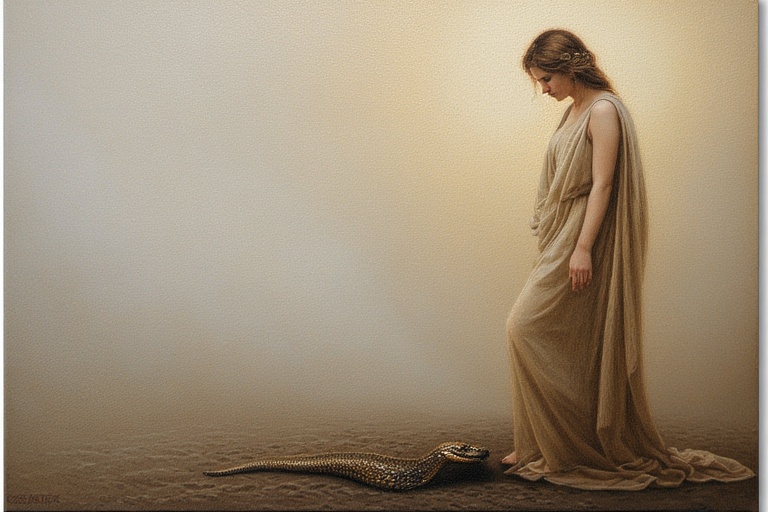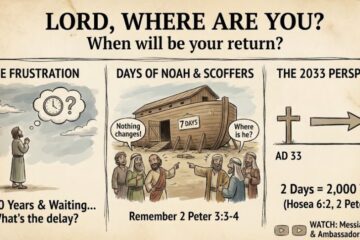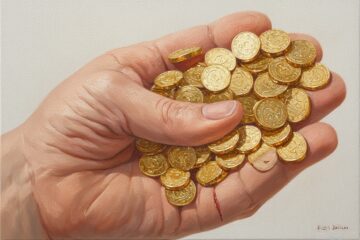One of the great joys of reading the Bible with the mind of the Church corporate is in spotting the divine threads of gold that are woven within its pages and stories, the very scaffolding of the meta-narrative. That a story that begins in the garden finds an astonishing and joyful conclusion in a city-garden, and the One who spoke the first “Let there be light” is the same Lamb who is its eternal lamp.
If we read Genesis with our eyes tuned to this pattern, we see it’s not merely a book of beginnings, but a treasure chest of promises that find their “Yes” and “Amen” in Christ (2 Corinthians 1:20). Let’s trace a few of these threads from the first book to the last.
1. The Tree of Life: From Forbidden to Forthcoming
- Genesis 2:9 (ESV): “And out of the ground the Lord God made to spring up every tree that is pleasant to the sight and good for food. The tree of life was in the midst of the garden, and the tree of the knowledge of good and evil.”
- Revelation 2:7 (ESV): “He who has an ear, let him hear what the Spirit says to the churches. To the one who conquers I will grant to eat of the tree of life, which is in the paradise of God.”
- Revelation 22:2 (ESV): “…through the middle of the street of the city; also, on either side of the river, the tree of life with its twelve kinds of fruit, yielding its fruit each month. The leaves of the tree were for the healing of the nations.”
Our story starts, wonderfully, with a tree. Access to the Tree of Life was the fruit of a perfect relationship with God, a sharing in His own divine life. After the Fall, humanity is exiled from it, lest we “take also of the tree of life, and eat, and live forever” in a state of sin (Genesis 3:22). It’s a poignant, tragic moment.
But what God closes in Genesis, Christ re-opens in Revelation. The promise to the faithful in Ephesus is a direct callback: the Tree of Life is no longer forbidden; it is the reward for those who “conquer” through faith. And in the glorious vision of the New Jerusalem, the Tree is not a single tree in a garden, but a multitude lining the river of life, its leaves bringing healing to a restored creation. The early Church Fathers, like St. Irenaeus, saw this as a recapitulation—a summing up and restoring of God’s original intent. The healing of the nations signifies the reversal of the curse of Babel, a beautiful fulfilment of God’s promise to Abraham that all nations would be blessed through him.

2. The Bride – from a rib to the new Jerusalem
- Genesis 2:21-22 (ESV): “So the Lord God caused a deep sleep to fall upon the man, and while he slept took one of his ribs and closed up its place with flesh. And the rib that the Lord God had taken from the man he made into a woman and brought her to the man.”
- Revelation 21:2 (ESV): “And I saw the holy city, new Jerusalem, coming down out of heaven from God, prepared as a bride adorned for her husband.”
- Revelation 21:9 (ESV): “…Come, I will show you the Bride, the wife of the Lamb.”
The first bride is fashioned from the side of the first Adam while he sleeps a deep sleep. This is a profound mystery, as the Apostle Paul notes, but it finds its ultimate meaning in Christ (Ephesians 5:32). The New Testament consistently portrays the Church as the Bride of Christ. And where do we see this Bride in her final, glorified state? In Revelation, she is the New Jerusalem, “coming down out of heaven from God.”
The parallels are stunning. The second Adam, Christ, also slept a deep sleep—the sleep of death on the Cross. And from His pierced side flowed blood and water, symbols of the sacraments of Holy Communion and Baptism, from which the Church, his Bride, is mystically formed. The first bride was brought to Adam in a garden; the final Bride, the Church, is presented to the Lamb in a city that is itself a garden. The entire narrative of salvation is, in this sense, a love story between a Groom and His Bride.

3. The Serpent’s ultimate defeat: from protoevangelium to final victory
- Genesis 3:15 (ESV): “I will put enmity between you and the woman, and between your offspring and her offspring; he shall bruise your head, and you shall bruise his heel.”
- Revelation 12:9 (ESV): “And the great dragon was thrown down, that ancient serpent, who is called the devil and Satan, the deceiver of the whole world – he was thrown down to the earth, and his angels were thrown down with him.”
This verse in Genesis is often called the Protoevangelium – the “first Gospel.” It’s the initial, cryptic promise that the disaster of the Fall will not be the final word. The “offspring of the woman” will one day crush the serpent’s head, a fatal blow, though he will himself be wounded in the process.
The New Testament writers see this promise fulfilled in Christ. Paul writes, “The God of peace will soon crush Satan under your feet” (Romans 16:20). But it is in Revelation where the identity of the serpent is made utterly clear. He is no mere snake; he is “that ancient serpent,” the devil himself. The cosmic war declared in Genesis 3:15 reaches its climax in the heavenly battle of Revelation 12, where the dragon is decisively defeated and thrown down by the blood of the Lamb. The bruised heel of the offspring is the Cross; the crushed head is the empty tomb and the final judgment.

This is just a glimpse of the magnificent tapestry of scripture. From the rivers of Eden (Genesis 2:10-14) that find their echo in the river of the water of life in Revelation 22:1, to the “very good” creation of Genesis 1:31 that is restored and made new in Revelation 21:5 (“Behold, I am making all things new”), the story is one of loss and glorious recovery. The God who walked with Adam in the cool of the day will once again dwell with His people, and “death shall be no more” (Revelation 21:3-4). The garden-city is our true home, and the Lamb upon the throne is the one who has opened the way back.
It is a profound joy to know that the Theo-drama will play out to His glory, because He has said it and we as believers can rest under the shadow of His mighty wings, knowing His truth, justice, and ultimately mercy, prevails even unto the end of time.
O God, who in creating the world laid the foundation for all that You would do to redeem humanity:
Grant that as we read the story of our beginnings in the book of Genesis, we may see its glorious fulfilment in the revelation of Your Son; who with You and the Holy Spirit lives and reigns, one God, forever and ever.
Amen.



0 Comments